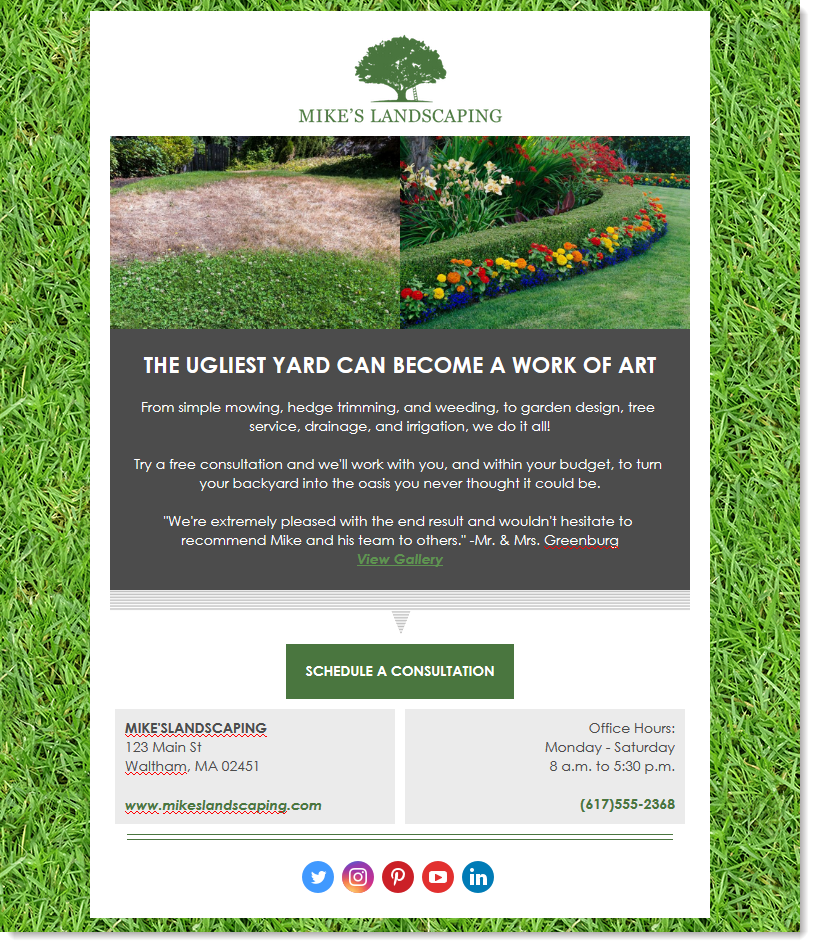Whether you have your own website or are using an ecommerce store, selling goods and services in an email goes beyond adding a "buy now" button and hitting "send" - there's a little more of an art to it. The good news is that it isn't hard and doesn't have to be overwhelming! By breaking the steps down into digestible parts, it makes it easier to create an enjoyable email that drives your contacts to make a purchase:
| Did you know? If you sell through Shopify, Etsy, eBay, Wix, Magento, WooCommerce, or BigCommerce, you can track the sales generated from your emails from within your Constant Contact account! |
Generally customers join your mailing list because they like/want/need your products and services, find your prices reasonable, trust your reputation, appreciate your customer service, or are waiting for a sale or promotion. Whichever the reason, your contacts are looking to get some value from your email, and getting the right content in front of the right customer at the right time makes all the difference for sales.
There's tons of marketing advice on the web for tailoring marketing to different generations and demographics, but list segmentation may be the most important step you can take to increase the success of your emails. All the marketing research in the world isn't going to help if you send the same email to everyone on your list. By breaking your list into smaller, more targeted segments, you can deliver more customized content that speaks specifically to each of your audiences:
| Get recognized with a fresh logo! With our Custom Logo Service, we'll provide you with three logo proofs, and one round of revision of your logo proof of choice. Give your organization a fresh branding that will have your customers remembering exactly who you are at first glance! |
If you've taken the time to segment your list, it makes it much easier to create compelling content because you're not trying to force a little something for everyone into your email. You have a little more room to not just explain what your product or service is, but also explain how it solves a problem, fulfills a need, or benefits your contacts.
| Products example | Services example |
| Selling physical goods is all about showing off the product and making it super simple to take action and purchase it. The main call-to-action sits at the top of this email example, but all the details about the products are available, so the customer can do research before they hit the "Checkout" button. The images show the actual products, but also give an example of how to use them, and the email includes an incentive to purchase multiple items. The return policy is featured so there are no surprises that cause the buyer to drop out of the payment flow if they're hesitant to buy online. | Selling services can be trickier than selling physical goods because you may need to have a discussion with a customer to settle on price, expectations, and scheduling. This email example relies heavily on description and contrasting before-and-after images to get the point across. Adding a gallery link below the customer quote makes it feel less of a made-up statement, and helps persuade contacts to click on your call-to-action. The email isn't so much geared to "buy now," but to start a sales conversation. |
 |  |
| Design tip: Take the time to highlight what differentiates you from your competition - remind customers of the quality of your work, your role in the community, your commitment to social causes, your environmental sustainability practices, or your multi-generational business reputation - it may make your customer think twice before purchasing from a competitor. |
Did you know that with every extra click it takes to complete an action, you lose some of your audience? Shopping cart abandonment happens when potential buyers are turned off and exit your sales flow. It can happen because there are too many steps in the buying process, the checkout doesn't seem safe, there isn't enough information about the product or service, there are surprise fees or hidden costs, the shopping cart doesn't let you adjust a quantity or keep shopping, or the checkout forces you to login.
To combat shopping cart abandonment from your email:
| Design tip: Shorter emails with a clear call-to-action get better engagement. Keep your content relevant to your call-to-action and save the rest for another email to help keep your contacts' attention on making a purchase. Add links to a website or blog to give more details without making your email too long, but make sure there's also a way to enter the sales flow from the webpage you're linking to! |
Copyright © 2025 · All Rights Reserved · Constant Contact · Privacy Center